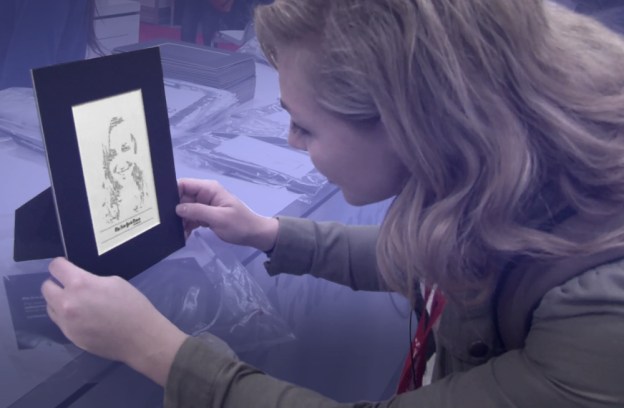
SXSW Interactive Week is coming to a close, making this an appropriate time for a little reflection on the tech-centric leg of the festival.
So, let’s talk about what everyone wants to know: Who won SXSWi? I’ll tell you who: Me. I won. And so did everyone else who attended – because SXSW is one, big, massive indulgence in self promotion and gratuitous faux celebrity.
It’s only natural that a show heavily focusing on social platforms is going to indulge its attendees in some good old-fashioned networking narcissism, but this … this has gotten out of control.
I’ll start with the photo booths. Nothing new, right? I remember this being a big deal at malls when I was in middle school. I would ante up the $3 for a string of four photos that were of varying quality (usually a sliding scale of “mediocre” to “worthy of a spot on my binder jacket:). They were fun and they were a novelty. And they are absolutely everywhere at SXSW.
Of course, these aren’t your average photo booths. Child, please – nothing about SXSW is average. These photos booths not only create a print for you, they turn your photos into animated GIFs that can then be tweeted out from your handle, or emailed, or Vined, or sent to an ever-changing electronic wall that slides different pictures in and out. If you’re lucky, your photo will make it to the wall, the screen, or the projector and you will have 15 minutes of SXSW fame!
If these digitally-reimagined photo booths aren’t quite doing it for you, there are a variety of SXSW experiences that might: The New York Times was here doing profile word clouds. At the booth on the show floor, you could have your picture taken, choose a section of The Times you like, and print out an image of yourself made of text.
Having your image plastered all over a party or a booth isn’t the only option. Events all week prompted you to tweet at the bands playing to interact with them. I probably don’t have to tell you that parties, concerts, happy hours, and meetups were all pushing their hashtags hard, wanting whatever social data they could eke out of the money they spent on being at the show. But I will: They did.

There was a machine that etched your face onto your morning cup of coffee. Need I say more?
It’s all part of the wonderful, terrible monster that is SXSW. There are truly incredible things happening here: New concepts in peer-to-peer sharing products, high-tech takes on concert lighting, a peek inside the hardware revolution, one of the first working augmented reality apps. But then … there’s also Grumpy Cat and the block-circling line that came with her (she hated every last one of us, to be sure).
This over-the-top, completely blatant display of self-gratification has only gotten worse in recent years, partially because of what social networks are doing to us on a larger scale, and partially because of the brand focus that’s been increasing during SXSW Interactive Week. And it’s totally addicting. With only a little shame will I cop to brag about meeting Grumpy Cat. And my team and I here made plenty of use of a handful of the photo booths, because, well, if we were the sort of people that didn’t care about Instagram or Flickr or Vine, we wouldn’t be here now, would we?

Social network-made narcissism is a epidemic, and something like SXSW is only going to bring out the worst of it in all of us. The problem is that it threatens to distract everyone in here from learning, and overshadow the things that everyone out there should actually be hearing about.
Attending SXSW gives you a picture of what’s happening in social and interactive media, an important perspective to capture given how quickly this market is evolving. But while you’re trying to learn, see and process all of this, it’s social media itself that’s distracting you. We’re trying to get an overhead view of this industry, but we can’t climb high enough to escape it. We’re trying to understand the machine while spinning away as cogs inside of it. We don’t control it, it controls us. Welcome to the SXSW power struggle.
We’re all here to talk about and evolve the digital, social worlds, but they’re forming and changing so fast, with or without our input, that getting swept up in the undercurrent is hard to avoid. The very thing we want to keep making better is playing on our weak, selfish, connection-addicted minds. Any of the discussion out there about how “social networks aren’t the product, you are!” can go right up there with Big Brother conspiracies and attempts to fight the man: There is plenty of truth there, but it’s too late. If you chose to dive in this deep, you’re part of it now – and let’s be honest, you’re having fun.
I can step back and look at SXSW as this visual, tangible example of social networking, and see plenty of problems – but (and I hate saying this) I have no solution to offer. We live in a digital age that is making the world smaller and the individual bigger, and while that’s starting to make us all feel like the celebrities we’re not, there are a great many good things happening that can’t be denied: We are more connected, more informed, and our individual voices are louder. Social, interactive media is this messy, ineffable, self-promoting, totally-infiltrating thing – and that means SXSW is sort of a giant #selfie . But the thing is, I wouldn’t have it any other way.


